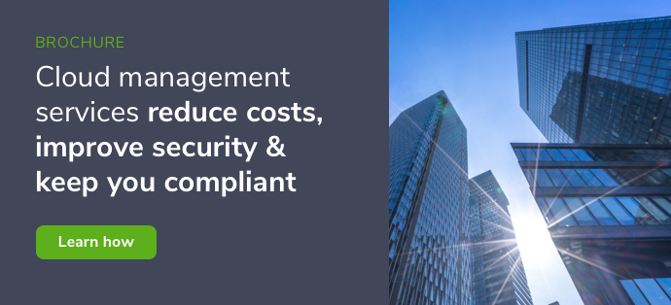Many enterprises are moving away from on-premise data centers and shifting their operations to the cloud. However, with new resources, applications, and infrastructure, effective cost management of these cloud migrations presents an ongoing challenge.
The True Cost of a Cloud Migration
The cloud provides greater efficiency, agility, and scalability for large enterprises. But while the advantages are clear, managing your cloud environment after a large migration can lead to unexpected costs.
Post-migration Costs
Once you've moved the relevant applications, data, and infrastructure to the cloud, it's easy to imagine that you'll start seeing savings straight away. Yet, your new cloud assets have introduced a whole host of ongoing expenses that you need to manage.
These include:
- Infrastructure and software expenses
- System operations and maintenance costs
- Administration
- System updates
To keep a lid on this spending, it's important to have a cost management strategy in place. So you know where your assets are, what you're spending on them, and how you can optimize their usage to get the most value.
Tracking Expenses After a Cloud Migration
Keeping track of new resources, applications, and assets after a large cloud migration can be tricky. That's why you should use the following cloud management strategies to stay on top of your spending.
Tagging Cloud Resources
Cloud tagging is an effective strategy for gaining visibility into your cloud spend. Tagging means assigning a label to your cloud resources, so you can easily categorize and identify them. Cloud providers like Azure, AWS, and GCP all offer cloud tagging functionality within their native consoles.
To start, select a few areas of your business where you want to understand your costs better. Then, assign specific tags based on the information you want to find out.
Commonly used tags include:
- Application Name
- Business Unit
- Environment
- Cost Center
- Service
- Product
These tags will help improve the organization and management of your assets, so you'll be able to gain visibility into what you own. However, to get the most out of cloud tagging, you should partner with a cloud management provider.
A cloud management provider can offer a platform to order, track, and analyze tags. This helps create actionable insights which will help you allocate costs more effectively and drive better decision making.
Remember, some cloud providers tag keys and values are case sensitive which can cause reporting problems. For example, CostCenter, costcenter, cost-center, cost_center will all show up differently. Some cloud management providers, like Cass, can normalize these tags so they show up as a single tag key in reporting.
Ongoing Cost Optimization
Around 30% of cloud spending is wasted. Typically, this is through idle resources and fluctuating usage requirements. For large enterprises, ongoing cost optimization is essential to minimize this superfluous spending.
The most important facet of cost optimization is understanding your cloud. This involves spending time with your IT departments, digging deep into your cloud bills, and implementing a process of continuous monitoring. For many organizations, this task can't be achieved easily in-house. And it requires an experienced cloud management provider to help.
A cloud management provider will give you the tools to gain full transparency over your cloud spend. Many offer in-depth reporting software to highlight recommendations for rightsizing, to keep cloud environments lean and optimized.
For enterprises that have just undergone a large migration, continual optimization from a cloud management provider can help reduce any erroneous spending and increase the efficiency of new cloud deployments.
Get a Handle on Cloud Costs
To get the most value out of your cloud migration, you need visibility and control over what you own. With cloud management services, you can optimize your cloud environment so your cloud spend goes further.


